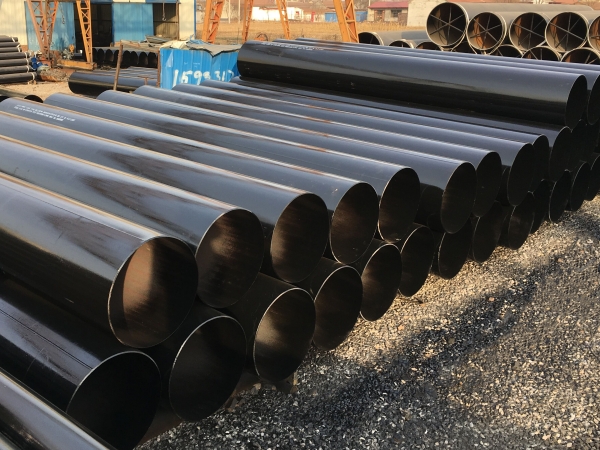With the development of the national economy, thick-walled LSAW steel pipes are increasingly used in offshore platforms, high-temperature and high-pressure vessels, wind power pipe piles and other fields. The production of such steel pipes generally uses D36 steel, S355 steel and structural steel plates with Z-direction properties. The plate thickness is large, the carbon content is high, and the carbon equivalent is high. The weldability is poor and the hardenability tends to increase. The welding performance of the joint is reduced and cold cracks are prone to occur, especially transverse cracks. This article will take S355 LSAW steel pipe as an example to explain how to repair transverse cracks. Continue reading to learn more.

Repair of S355 LSAW Steel Pipe Transverse Crack:
- Defect confirmation:
Conduct 100% UT inspection of all welds to mark the location, length, depth and direction of cracks. If the entire weld is defective, it is recommended to trim the entire weld back to submerged arc welding. Local arc welding is recommended for local rework.
- Preheat before planing:
The temperature is 110-170℃, the preheating temperature detection position is not less than 150mm on both sides of the weld, and the heating range is within 500mm from the periphery of the defect.
- Gouging:
The planing range is outward on both sides of the crack defect and the good weld is not less than 50mm. Outward gouging is done at the end of the gouge. The transition plane and the vertical line must be at least greater than 45°. The gouging angle of the carbon rod should be below 60°, especially at the cracks to be reached, the smaller the angle, the better.
- Polishing:
Polish until there is no black skin. The surface after polishing should have a smooth transition and there should be no sharp pits.
- PT:
Penetration Test (PT) After cooling to appropriate temperature.
- Polishing:
Polish and polish according to the PT test results until there is no red line.
- MT:
After grinding, conduct magnetic particle testing (MT) to confirm that there are no residual cracks. Otherwise, the process should continue until there are no cracks in the MT test.
- Preheat before welding:
The recommended preheating temperature is 110-170℃. The preheating temperature detection position is not less than 150mm on both sides of the weld, and the heating range is within 500mm from the weld.
- Welding:
According to the repair welding instructions, the width of the weld bead should not exceed 15mm and can be divided into lanes. Arc welding or automatic submerged arc welding can be used.
- Post-weld insulation and slow cooling:
- Post weld heat treatment:
Post-weld heat treatment is mainly to diffuse hydrogen and reduce post-weld residual stress. There are special "hydrogen treatment" and "pressure relief heat treatment" for the rigidity of the weldment. The recommended heat treatment system is: after the welding is completed, use a ceramic electric blanket to heat it to 200℃, keep warm for 2 hours and then turn off the heat.
- Post-weld inspection:
48 hours after the welding is completed, conduct NDT testing as required to confirm that the return is qualified.